Immunomodulatory effects of domoic acid differ between in vivo and in vitro exposure in mice
- PMID: 19172200
- PMCID: PMC2630849
- DOI: 10.3390/md6040636
Immunomodulatory effects of domoic acid differ between in vivo and in vitro exposure in mice
Abstract
The immunotoxic potential of domoic acid (DA), a well-characterized neurotoxin, has not been fully investigated. Phagocytosis and lymphocyte proliferation were evaluated following in vitro and in vivo exposure to assay direct vs indirect effects. Mice were injected intraperitoneally with a single dose of DA (2.5 microg/g b.w.) and sampled after 12, 24, or 48 hr. In a separate experiment, leukocytes and splenocytes were exposed in vitro to 0, 1, 10, or 100 microM DA. In vivo exposure resulted in a significant increase in monocyte phagocytosis (12-hr), a significant decrease in neutrophil phagocytosis (24-hr), a significant decrease in monocyte phagocytosis (48-hr), and a significant reduction in T-cell mitogen-induced lymphocyte proliferation (24-hr). In vitro exposure significantly reduced neutrophil and monocyte phagocytosis at 1 muM. B- and T-cell mitogen-induced lymphocyte proliferation were both significantly increased at 1 and 10 microM, and significantly decreased at 100 microM. Differences between in vitro and in vivo results suggest that DA may exert its immunotoxic effects both directly and indirectly. Modulation of cytosolic calcium suggests that DA exerts its effects through ionotropic glutamate subtype surface receptors at least on monocytes. This study is the first to identify DA as an immunotoxic chemical in a mammalian species.
Keywords: Domoic acid; adaptive immunity; immunotoxicity; innate immunity.
Figures

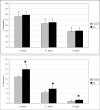
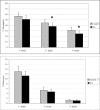
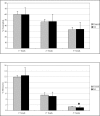

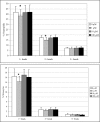

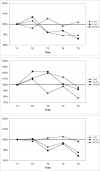
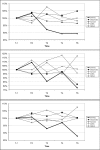
References
-
- Shen PP, Zhao SW, Zheng WJ, Hua ZC, Shi Q, Liu ZT. Effects of cyanobacteria bloom extract on some parameters of immune function in mice. Toxicol. Lett. 2003;143(1):27–36. - PubMed
-
- Walsh CJ, Luer CA, Noyes DR . Effects of environmental stressors on lymphocyte proliferation in Florida manatees, Trichechus manatus latirostris. Vet. Immunol. Immunopathol. 2005;103(3–4):247–256. - PubMed
-
- Witkowski JM, Siebert J, Lukaszuk K, Trawicka L. Comparison of effect of a panel of membrane channel blockers on the proliferative, cytotoxic and cytoadherence abilities of human peripheral blood lymphocytes. Immunopharmacol. 1993;26(1):53–63. - PubMed
MeSH terms
Substances
LinkOut - more resources
Full Text Sources
